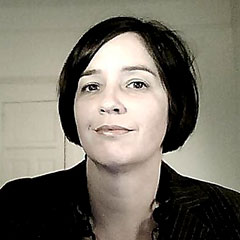Moulding Tradition (2009) is a work done by the designers Andrea Trimarchi and Simone Farresin of Studio Formafantasma: It consists of a group of five ceramics in different shapes and forms: boat-like bowls of various sizes, vases and bottles. Some of the maiolica objects display special attributes which refer to the sea and to rescue operations on the water such as a pair of paddles and lifebuoys. Others use ribbons, printed with historical and immigration data, to tie framed photographs and other ‘décor’ to the vessels. The project is informed by the tin-glazed maiolica from Caltagirone in Sicily – itself a result of the encounter with (Moorish) Islamic ceramic traditions in the eleventh and twelfth centuries, which in the following centuries triggered a technical and content-related process of adaptation. From the early modern age onwards, maiolica thus became “an excellent indicator and agent of design transmission across the globe” (Ajmar-Wollheim/Molà 2011, 17).
Among the ceramic vessels being produced up till now is the genre of the so-called teste di moro – vases that in a stereotypical, often grotesque and derogative manner depict the faces of people referred to as either ‘African’ or as ‘Arabic.’ In their original form as busts they most probably date back to the seventeenth century, when they were used as flowerpots to decorate balconies and terraces, suggesting an exuberant vegetation. By replacing this generic image with a black-and-white photograph of a known and thus named immigrant from Nigeria, Sofien Adeyemi, Andrea Trimarchi and Simone Farresin update the references and create a link to recent migration movements. A flask with an attached ceramic tile lists the names of the countries Adeyemi has traveled through on his way from West Africa to Italy. His (multiplied) portrait together with written information on present-day migration policies is attached to the ceramic form, thus literally adding a new level of meaning. Yet another wine bottle recalls fruit picking, predominantly done by migrant workers under harsh and exploitative conditions.
By introducing further elements of reality in traditional forms, Formafantasma with Moulding Tradition create complex discourses on the historical and present-day entanglements between Africa and Europe and the imbalance in their economic and political conditions. According to the designers, “contemporary public opinion polls have claimed that 65% of Italians believe that the immigrants are ‘a danger for our culture.’” In this context Moulding Tradition speaks of the blind spots of contemporary culture: Neither the explicit transcultural character of the maiolica which had contributed to – if not established – the fame of Caltagirone’s craft tradition is valued, nor are the descendants of those who once introduced this new ceramic technique welcomed. Moulding Tradition also alludes to the fact that in the most recent age of globalization nearly everything – data, information, images, objects – is free-flowing, but some people’s movements from specific geographies are monitored and restricted. Thus, it questions the ideology of cultural segregation and confronts it with the factual migration of people and goods as well as with the various historical entanglements. Furthermore, Moulding Tradition, for which the designers cooperated with a local craftsperson, can also be read as a comment on the role of craft in contemporary society as well as on the question of how craft is sometimes “locked into a tradition repeating [moulding, author’s note] the same objects over and over again” (Studio Formafantasma 2015). In order to counter this tendency, the designers left their products with a kind of raw surface, since normally maiolica ceramic is painted in bold colors after being dried thoroughly. In the case of Formafantasma’s maiolica, the objects remain ‘unfinished’ – a (blank) space to metaphorically be worked on and to open up a debate. Thus, Moulding Tradition stands for Studio Formafantasma’s conceptual and critical design-thinking approach. In this approach, the duo relies on textual information as well as on the haptic and aesthetic qualities of the substances they use: “[M]aterials are not only functional but also have the ability to evoke memories or to testify historical knowledge” (Studio Formafantasma 2015).
The authors of Global Design History make clear how the most recent phase of globalization not only accelerates flows of people, images, information, commodities and capital, but also contributes to the various types of exclusion and border control regimes (Adamson, et al. 2010, 1f.). At a time when design is becoming increasingly politicized, the question of how designers respond to the hitherto biggest wave of flight and migration in the years 2015/16 becomes obvious. Indeed, similar to Moulding Tradition, there are other design objects as well as works at the interface of design and art which can be seen as tools for reflecting on migration and flight. In using design as a tool, the migrancy reference can often be found on more than only one level. Besides its content-related presence, it is also tangible via the objects’ materiality or techniques, which for their part often bear traces of mobility and cultural transfer. Thus, these objects speak strongly to the historical and cultural migration of forms.
References
- Adamson, Glenn, et al., editors. Global Design History. Routledge, 2011.
- Ajmar-Wollheim, Marta, and Luca Molà. “The Global Renaissance. Cross-cultural Objects in the Early Modern Period.” Global Design History, edited by Glenn Adamson, Giorgio Riello and Sarah Teasly, Routledge, 2011, pp. 11–20.
- Studio Formafantasma. “Studio Formafantasma on Words as a Tool for Design.” Design Indaba Conference, Talk on November 3rd 2015, http://www.designindaba.com/videos/conference-talks/studio-formafantasma-words-tool-design.
published February 2020

